Don't wanna be here? Send us removal request.
Text
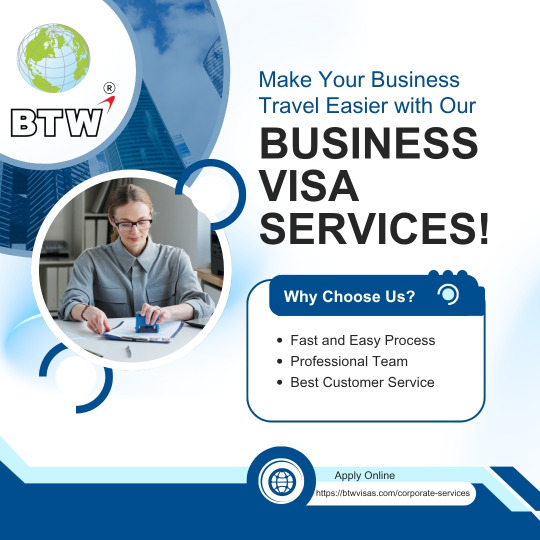
Business Visa Services | Fast & Professional | BTW Visas
0 notes
Text

Australia Business Visa Updates 2025 | BTW Visas
0 notes
Text
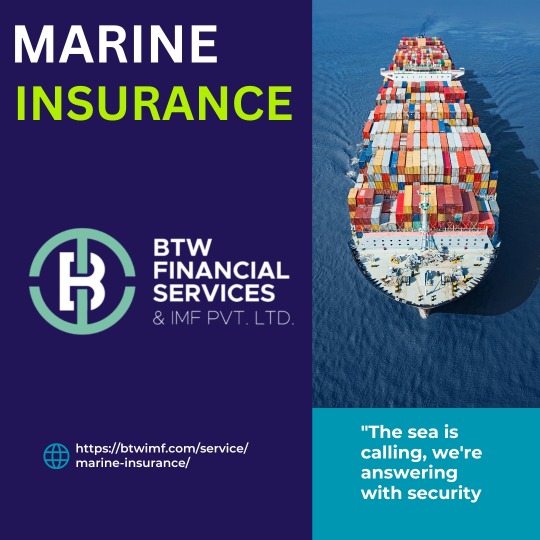
Custom Marine Insurance Policies | Expert Guidance & Fast Service
0 notes
Text
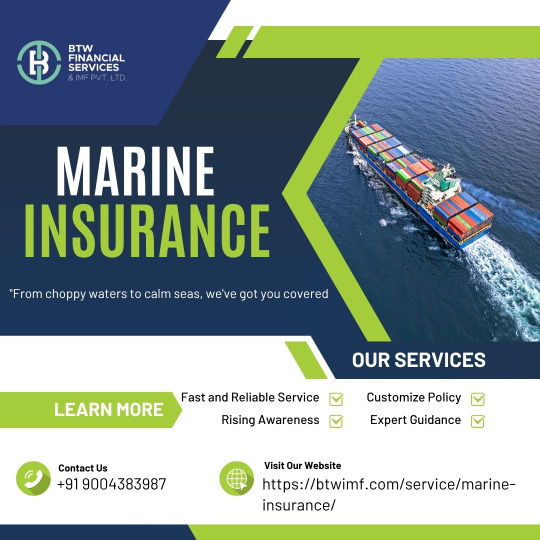
Marine Insurance for Secure Shipping | BTW Financial Services
0 notes
Text
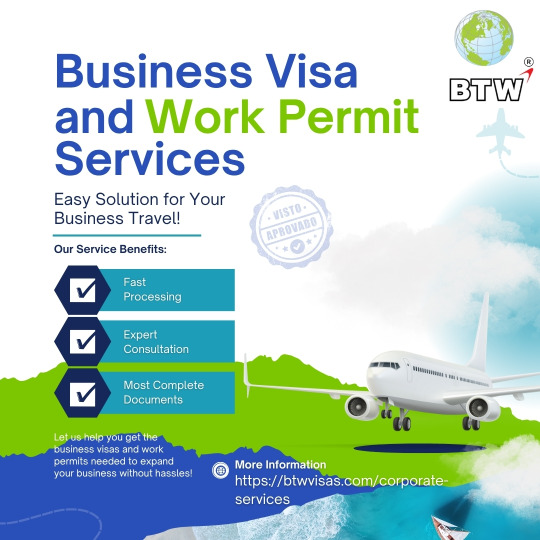
Fast Business Visa & Work Permit Services | BTW Visas
0 notes
Text
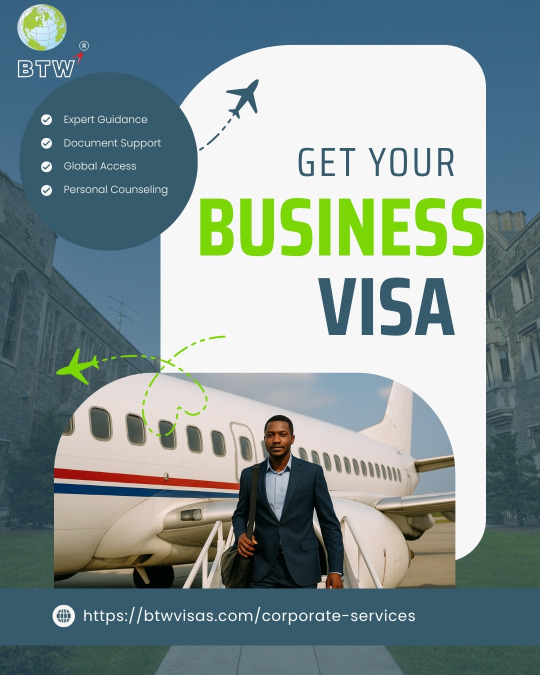
Expert Business Visa Assistance | Corporate Services | BTW Visas
0 notes
Text

Comprehensive Marine Insurance | BTW Financial Services
0 notes
Text
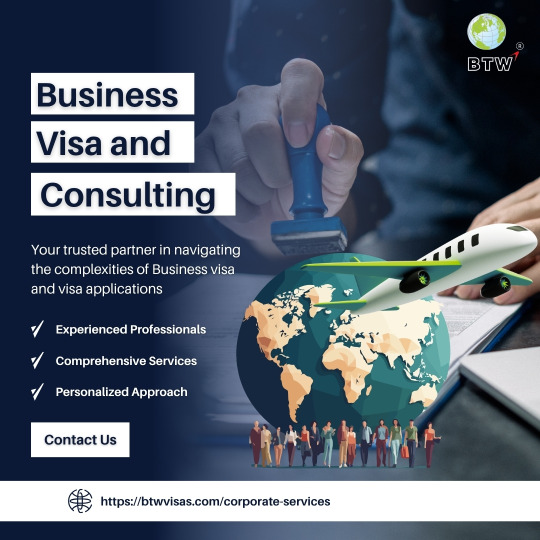
Best Cargo Service & Marine Insurance | BTW Financial Services
0 notes
Text
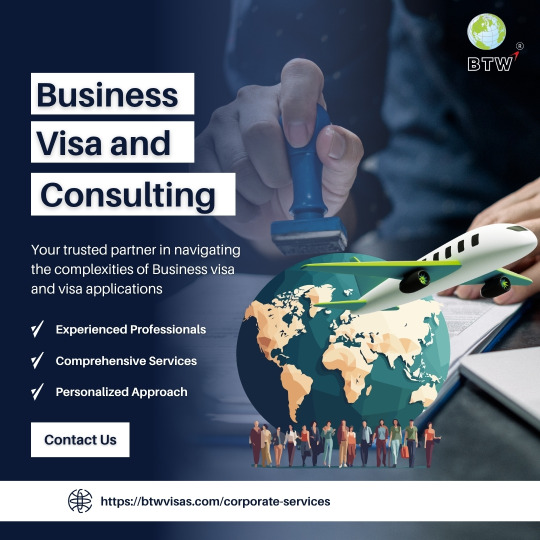
Expert Business Visa & Consulting Services | BTW Visas
0 notes
Text
Navigating the Maze: A Guide to US Corporate Visas for Foreign Employees
In today's interconnected global economy, the ability to move talent across borders is not a luxury—it's a necessity. For companies looking to expand their US operations, launch new projects, or bring in specialized talent, transferring key foreign personnel is a critical step. However, the U.S. immigration system can appear to be a complex maze of acronyms and regulations. For business leaders and HR managers, understanding the main pathways is the first step toward a successful strategy.
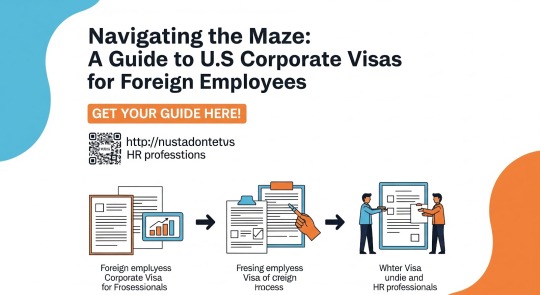
This guide is designed to demystify the process, providing a clear overview of the most common and effective options for securing a US corporate visa for foreign employees. By understanding these key visa types, your company can better plan its global mobility and talent acquisition strategies.
The First Step: Understanding Nonimmigrant vs. Immigrant Visas
Before diving into specific visa types, it's crucial to understand a fundamental distinction. US visas generally fall into two broad categories:
Nonimmigrant Visas: These are for temporary stays for a specific purpose, such as work, business, or study. For corporate needs, this is the most common route, allowing employees to work in the US for a defined period, which can often be extended.
Immigrant Visas (Green Cards): These grant an individual permanent residency in the United States. While this may be the ultimate goal for many, it is a much longer and more complex process, often following a period of successful temporary employment.
This article will focus on the primary nonimmigrant visas that corporations use to bring foreign professionals to the United States.
The Intra-Company Transfer Visa: The L-1
The L-1 visa is a cornerstone for established multinational corporations. It is specifically designed to facilitate the transfer of employees from a foreign office to a parent, subsidiary, affiliate, or branch office in the U.S.
Who Qualifies? The employee must have worked for the qualifying foreign company for at least one continuous year within the three years preceding their transfer.
Two Categories of L-1 Visas:
L-1A for Managers and Executives: This is for employees coming to the U.S. to fill a managerial or executive role. This visa has a maximum stay of seven years and offers a direct pathway to a Green Card.
L-1B for Specialized Knowledge Employees: This is for employees who possess knowledge of the company's products, services, research, systems, or proprietary techniques that is not commonly found in the industry. The maximum stay for an L-1B is five years.
Key Advantage: The L-1 visa does not have an annual cap, making it a reliable and predictable option for qualifying companies throughout the year.
The Specialty Occupation Visa: The H-1B
The H-1B is perhaps the most well-known work visa. It is designed for professionals coming to the U.S. to perform services in a "specialty occupation."
What is a Specialty Occupation? This is a role that typically requires, at a minimum, a bachelor's degree or its equivalent in a specific field. Common H-1B fields include IT, finance, engineering, architecture, and healthcare.
The Major Hurdle: The Annual Cap: Unlike the L-1, the H-1B visa is subject to a strict annual quota (or "cap"). The demand for H-1B visas far exceeds the available supply each year, forcing the U.S. government to run a lottery system to select eligible candidates. This makes the H-1B a highly competitive and unpredictable option. Companies must plan well in advance to enter the lottery, which typically occurs in March for an October 1st start date.
Other Important Corporate Visa Options
While the L-1 and H-1B are the workhorses, other visas serve important niche purposes:
O-1 Visa (Extraordinary Ability): For individuals who can demonstrate extraordinary ability in their field (sciences, arts, business, etc.). This is reserved for top-tier talent.
E-1/E-2 Visas (Treaty Trader/Investor): For individuals from specific countries that maintain treaties of commerce and navigation with the U.S. The E-1 is for those engaged in substantial trade, while the E-2 is for those who have made a significant investment in a U.S. business.
B-1 Visa (Business Visitor): This visa is strictly for short-term business activities like attending meetings, negotiating contracts, or consulting with associates. It cannot be used for long-term employment or receiving payment from a U.S. source.
The Process: A Corporate Responsibility
It is critical to remember that for work visas like the L-1 and H-1B, the U.S. company is the "petitioner." The process is initiated and driven by the employer, not the employee. The company must file a detailed petition with U.S. Citizenship and Immigration Services (USCIS) proving that both the company and the employee meet all legal requirements. Only after USCIS approves the petition can the employee apply for their visa at a U.S. embassy or consulate abroad.
Conclusion
Choosing the right pathway for a US corporate visa for foreign employees depends entirely on your company's structure, the employee's background, and the nature of the U.S. role. The L-1 visa is the go-to for internal transfers within multinational companies, while the H-1B is the primary option for hiring new foreign professionals—if you can succeed in the lottery. Given the complexity and the high stakes, meticulous planning and professional guidance are paramount. Partnering with an experienced visa service is the most effective way to navigate the legal requirements and ensure a smooth process for your team. To streamline your company's global mobility needs and learn more about tailored solutions, explore these corporate services.
Frequently Asked Questions (FAQ)
Q1: What is the main difference between an L-1 visa and an H-1B visa?
A: The L-1 visa is for intra-company transfers, meaning the employee must have already worked for your company abroad for at least a year. The H-1B visa is for hiring new professionals for roles requiring a bachelor's degree or higher and is subject to a highly competitive annual lottery.
Q2: Can the family of an employee come to the US on these corporate visas?
A: Yes. Spouses and unmarried children under 21 can typically apply for dependent visas (e.g., L-2 for L-1 holders, H-4 for H-1B holders) to accompany the primary employee. In many cases, such as with the L-2 visa, the spouse may also be eligible to apply for work authorization in the U.S.
Q3: How long does it take to get a US corporate visa?
A: The timeline varies significantly depending on the visa type, USCIS processing times, and U.S. consulate appointment availability. An L-1 visa can sometimes be processed in a few months, while the H-1B process is tied to a strict annual timeline and lottery. It is essential to start planning many months, or even a year, in advance.
0 notes
Text
A Business Guide to UK Corporate Visa Requirements
The United Kingdom stands as a premier global destination for business, innovation, and talent. For companies operating on an international scale, the ability to deploy key personnel to the UK is vital for growth and project success. However, following Brexit, the UK has implemented a reformed immigration system that is fundamentally different from its predecessor. Understanding the key pillars of this system is essential for any business looking to hire foreign nationals.
This guide will demystify the primary UK corporate visa requirements, focusing on the points-based system and the main routes available for businesses. By understanding this framework, you can strategically plan your company's global mobility initiatives.
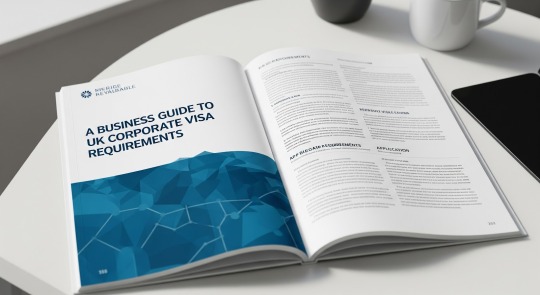
The First and Most Critical Step: The Sponsor Licence
Before you can even consider hiring a foreign employee, your UK-based company must first clear a critical hurdle: becoming a Home Office-approved sponsor. You cannot sponsor a worker without first obtaining a Sponsor Licence.
This involves an application to the UK Home Office where your business must prove it is a genuine organisation operating lawfully in the UK. You will need to provide various corporate documents and demonstrate that you have robust HR systems in place to manage your sponsorship duties. This process takes time and should be the absolute first step in your plan, completed well in advance of identifying a potential hire. Without this licence, the door to sponsoring most foreign workers is closed.
The Main Pathway: The Skilled Worker Visa
The Skilled Worker route is the primary visa for UK employers looking to hire foreign nationals for long-term roles. This route operates on a points-based system, where an applicant must score 70 points to be eligible. These points are awarded for a mix of mandatory and "tradeable" attributes.
Mandatory (Non-Tradeable) Points – 50 Points Total
Every applicant must meet these three core requirements:
Job Offer from an Approved Sponsor (20 points): The employee must have a valid job offer and a Certificate of Sponsorship (CoS) from a company that holds a Sponsor Licence.
Job at an Appropriate Skill Level (20 points): The role must meet a minimum skill level, defined as RQF Level 3 or higher (equivalent to UK A-levels). This ensures the visa is used for skilled, not low-skilled, roles.
English Language Proficiency (10 points): The applicant must prove they can read, write, speak, and understand English to a required standard (typically B1 level).
Tradeable Points – 20 Points Required
The final 20 points are usually secured by meeting a minimum salary threshold. This is where the system has some flexibility. The salary for the role must be the higher of:
The general salary threshold, which is currently £38,700 per year.
The specific "going rate" for that particular occupation.
If the salary meets this requirement, the applicant gets the final 20 points. However, points can also be "traded" for other attributes. For example, an applicant with a relevant PhD, particularly in a STEM field, or a job on the UK’s Immigration Salary List (which replaced the Shortage Occupation List), may be able to secure a visa with a lower salary, though it cannot fall below a set minimum.
The Intra-Company Transfer (ICT) Route
This route is the UK’s primary solution for multinational companies that need to transfer established employees to their UK branch. It is the direct equivalent of the L-1 visa in the US.
The main UK corporate visa requirements for this route are:
Existing Employment: The employee must have worked for your company overseas for at least 12 months (unless they are a very high earner).
Eligible Role: The job must be at a skilled level (RQF Level 6, or graduate level).
Higher Salary Threshold: The salary must meet a higher minimum threshold, currently £48,500 per year, or the going rate for the role, whichever is higher.
A significant recent change is that, unlike in the past, time spent on this visa can now count towards settlement (Indefinite Leave to Remain) in the UK, making it a more attractive long-term option.
Conclusion: Planning is Paramount
Navigating the UK corporate visa requirements demands a proactive and informed approach. The points-based system, while logical, is detailed and unforgiving of errors. The absolute priority for any UK business is to secure a Sponsor Licence long before it is needed. From there, understanding the skill levels, salary thresholds, and specific requirements of the Skilled Worker and Intra-Company Transfer routes is key to successfully bringing global talent into your UK operations. Given the complexities, partnering with a professional service that understands the nuances of corporate immigration is the most effective strategy. To ensure your business is fully prepared and compliant, explore expert corporate services.
Frequently Asked Questions (FAQ)
Q1: What is the very first thing our UK company must do to hire a foreign national?
A: The first and most critical step is to apply for and obtain a Sponsor Licence from the UK Home Office. Without this licence, you are not authorised to sponsor an employee for a Skilled Worker or Intra-Company Transfer visa.
Q2: What is the main difference between the Skilled Worker and Intra-Company Transfer visas?
A: The Skilled Worker visa is for hiring new employees (who may or may not have worked for you before) for a role in the UK. The Intra-Company Transfer visa is exclusively for moving an existing employee who has worked for your company in an overseas branch for at least 12 months into your UK office.
Q3: Can an employee's family join them in the UK on these visas?
A: Yes, in most cases. Both the Skilled Worker and Intra-Company Transfer routes allow the main applicant to bring their dependent family members, including their partner and any children under 18, to the UK with them.
0 notes
Text
The Specialist’s Entry: A Guide to Australia's Temporary Work Visa (Subclass 400)
In the world of international business, some needs are urgent, specific, and short-lived. You might need to fly in a senior engineer to commission a new piece of machinery, a specialist technician for emergency repairs, or a project manager to oversee a critical, time-sensitive installation. For these precise scenarios, a long-term sponsored work visa is overkill. What you need is a fast, flexible solution.
This is exactly where the Australia Temporary Work (Short Stay Specialist) visa (subclass 400) comes in. It is a vital tool for businesses that require highly specialized skills on a short-term basis. This guide will break down the essential requirements and ideal use cases for this unique visa, helping you understand when and how to leverage it effectively.
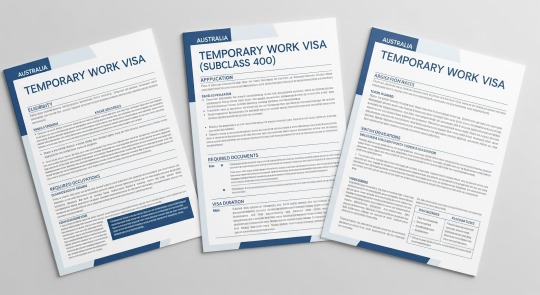
What is the Subclass 400 Visa? The Core Purpose
Think of the subclass 400 visa as a surgical instrument in the corporate immigration toolkit. It is not for ongoing roles or general labour. Its purpose is to allow an individual to enter Australia for a short period to undertake highly specialized, non-ongoing work.
The key terms here are "highly specialized" and "non-ongoing."
Highly Specialized Work: This means the skills, knowledge, or experience required for the job are not readily available in the Australian labour market. The work must be of a niche character, often related to proprietary technology, unique business processes, or advanced technical expertise.
Non-Ongoing Work: The work must have a clear and definite endpoint. It is for a specific project or task that will be completed within a short timeframe, typically three months or less.
Common Scenarios for a Subclass 400 Visa:
Installing, servicing, or repairing specialized equipment or machinery.
Commissioning a new production line or technology system.
Providing highly specialized training to an Australian team.
Undertaking a specific, short-term project that requires unique expertise.
Assisting in an emergency or time-critical situation.
Key Requirements for the Business and Applicant
To successfully use the subclass 400 visa, both the Australian business and the foreign worker must meet specific criteria.
For the Australian Business (The Inviting Organisation):
You must demonstrate a genuine need for the applicant's skills. This involves providing evidence that:
The work is highly specialized.
The required skills cannot be reasonably found in the local Australian workforce.
The work is short-term and non-ongoing.
The applicant will not be actively participating in the Australian labour market in a way that disadvantages local workers.
A strong letter of invitation is crucial, clearly outlining the nature of the work, its duration, and why the specific applicant is essential.
For the Applicant (The Foreign Worker):
The applicant must prove they have the specialized skills and experience needed for the role. They must also:
Have sufficient funds to support themselves during their stay in Australia.
Genuinely intend to stay only temporarily for the purpose of the work.
Meet Australia's health and character requirements.
Hold a valid passport.
Crucial Limitations: What the Subclass 400 is NOT For
Understanding the limitations of this visa is just as important as knowing its purpose. The subclass 400 visa cannot be used for:
Ongoing Employment: It is not a pathway to a permanent job or a substitute for a long-term sponsored visa like the subclass 482 TSS visa.
General Labour or Semi-Skilled Work: The "highly specialized" requirement is strictly enforced.
Replacing Australian Workers: You must be able to justify why a local worker could not perform the task.
Part-time Work Over a Long Period: The work must be continuous and completed within the visa's validity period.
The visa is typically granted for a stay of up to three months. In exceptional cases, a stay of up to six months may be considered if a strong business case is presented, but this is not the norm.
Conclusion: A Fast and Flexible Tool for Specific Needs
The Australia Temporary Work visa (subclass 400) is an invaluable asset for businesses needing to bring in elite, specialized talent for short, critical assignments. It bypasses the more complex and lengthy sponsorship processes associated with long-term work visas, providing a streamlined pathway for urgent business needs. By understanding its specific purpose and strict requirements, you can use this visa to solve critical operational challenges, drive projects forward, and maintain your competitive edge.
To ensure your application is positioned for success and aligns perfectly with the visa's stringent criteria, professional guidance is highly recommended. To streamline your company's global mobility needs and learn more about tailored solutions, explore these corporate services.
Frequently Asked Questions (FAQ)
Q1: How long does it take to process a subclass 400 visa?
A: Processing times can vary, but the subclass 400 is generally processed much faster than long-term work visas. In many cases, a decision can be made within a few weeks, making it ideal for time-sensitive situations.
Q2: Does my Australian company need to be an approved sponsor to use this visa?
A: No. This is a key advantage of the subclass 400 visa. Unlike the subclass 482 (TSS) visa, the Australian company does not need to hold a formal sponsorship licence. You only need to provide a strong letter of invitation and supporting evidence.
Q3: Can a subclass 400 visa be extended while in Australia?
A: No, the subclass 400 visa cannot be extended. It is granted for a specific, short period, and the holder is expected to leave Australia on or before the visa expiry date. If a longer-term role becomes available, the individual would need to apply for a different, more appropriate visa, likely from outside Australia.
0 notes
Text
A Guide to the Germany Business Visa for Non-EU Citizens
As Europe's economic powerhouse, Germany is a vital hub for international trade, technology, and innovation. For businesses and professionals from outside the European Union, engaging with this dynamic market often requires travel for meetings, negotiations, and conferences. Navigating the visa process is the essential first step to unlocking the immense opportunities Germany offers.
This guide is designed to demystify the process for obtaining a Germany business visa for non-EU citizens. We will focus on the most common pathway for short-term business travel, outlining the permitted activities, key requirements, and crucial distinctions from long-term work permits.
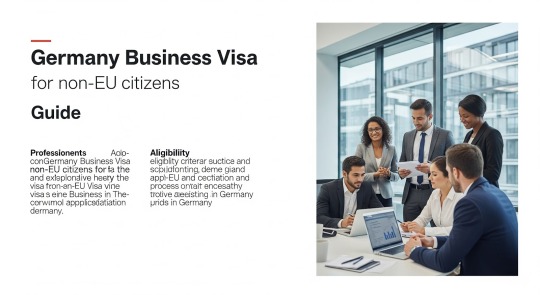
Your Gateway to Germany: The Schengen Business Visa
For short-term business engagements, you will not be applying for a unique "business visa" but rather a Schengen Visa (Type C) with the specified purpose of "business." This is the standard visa for non-EU citizens who need to enter the Schengen Area, which comprises 29 European countries, for a temporary stay.
A key feature of this visa is that it allows for a stay of up to 90 days within any 180-day period. It not only grants you entry into Germany but also provides the flexibility to travel to other Schengen member states during your trip.
What is "Business"? Permitted Activities on Your Visa
It is critical to understand what activities are allowed on a Schengen Business Visa to ensure full compliance with immigration rules. The visa is designed to facilitate business connections and commercial activities, not for taking up employment.
Permitted activities include:
Attending internal or external business meetings.
Negotiating and signing contracts with German partners.
Participating in conferences, trade fairs, or exhibitions.
Conducting market research or exploring potential business ventures.
Undergoing or providing short-term, company-specific training.
Crucially, you are not permitted to engage in paid employment with a German company or undertake any activity that would be considered entering the German labour market. The purpose is to do business, not to work in a formal employment capacity.
Core Requirements: Your Application Checklist
A successful application for a Germany business visa for non-EU citizens hinges on meticulous preparation and thorough documentation. Each document plays a role in proving the legitimacy of your trip.
Your essential checklist should include:
Application Form: The completed and signed Schengen visa application form.
Passport: Your valid passport must have at least two blank pages and be valid for at least three months beyond your intended departure from the Schengen Area.
Biometric Photos: Two recent, identical passport photos that meet German biometric standards.
Cover Letter: A detailed personal letter explaining the precise purpose of your visit, your itinerary, and who will be financing the trip.
Formal Invitation Letter: This is a crucial document. It must be an official invitation from your German business partner. The letter should be on company letterhead and include the German company's details, the purpose and duration of your visit, your travel dates, and a clear statement on who is covering your expenses.
Proof of Employment: A letter from your current employer (in your home country) confirming your employment status, your position, salary, and the company's approval of your business trip.
Proof of Financial Means: Recent bank statements to prove you can financially support yourself during your stay.
Travel Itinerary: Round-trip flight reservations and proof of accommodation (hotel bookings) for the duration of your stay.
Travel Health Insurance: A valid travel medical insurance policy with a minimum coverage of €30,000 that is valid for the entire Schengen territory.
Business Visa vs. National Work Visa: Knowing the Difference
If your plans in Germany extend beyond short-term meetings and involve formal employment for longer than 90 days, you will need a different type of visa altogether. A German National Visa (Type D) for the purpose of work is required for long-term employment. This is a completely separate process that involves obtaining a formal employment contract from a German employer and often requires approval from Germany's Federal Employment Agency.
The Schengen business visa is exclusively for short-term business activities and cannot be converted into a work permit while you are in Germany.
Conclusion
The Germany business visa for non-EU citizens is a vital and straightforward tool for engaging with Europe's largest economy. Success lies in preparation. A well-documented application, supported by strong evidence from both your employer and your German business partner, will pave the way for a smooth and efficient process. Ensuring every document is in perfect order is critical to avoiding delays and making your business trip a success.
For companies managing frequent international travel, professional visa assistance can streamline this process significantly. To ensure your business travel is seamless and compliant, explore expert corporate services.
Frequently Asked Questions (FAQ)
Q1: How long can I stay in Germany on a business visa?
A: A Schengen business visa allows you to stay in the Schengen Area for a maximum of 90 days within any 180-day period.
Q2: Can I get a job and work for a German company on this visa?
A: No. The Schengen business visa strictly prohibits taking up paid employment in Germany. Its purpose is for short-term business-related activities like meetings, negotiations, and conferences, not formal work.
Q3: Do I have to apply for the visa in person?
A: Yes, in most cases. First-time applicants for a Schengen visa are typically required to submit their application and provide their biometric data (fingerprints and a photograph) in person at a German embassy, consulate, or an authorized visa application centre in their country of residence.
0 notes
Text
Fueling Your Growth: A Guide to Canada's Corporate Visas for Startups
Canada has firmly established itself as a premier global destination for innovation and entrepreneurship. With thriving tech hubs, a diverse talent pool, and supportive government policies, it presents a fertile ground for startups looking to scale and enter the North American market. For founders and early-stage companies, moving key personnel—or the entire founding team—is a critical step in this journey.
Fortunately, Canada’s immigration system isn't just for large, established corporations. It features several dynamic pathways specifically designed to attract and retain innovative ventures. Understanding these options is the first step in leveraging them for your company's growth. This guide explores the most powerful Canada corporate visa for startups.
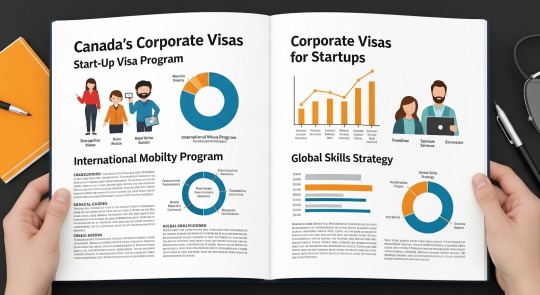
The Ultimate Goal: The Start-up Visa Program
This is Canada’s flagship program for entrepreneurs and is a true game-changer. Unlike most corporate visas which grant temporary work permits, the Canada Start-up Visa Program offers a direct path to permanent residency for immigrant entrepreneurs. This program is designed to attract innovative founders who have the potential to build businesses in Canada that can create local jobs and compete on a global scale.
Core Requirement: Support from a Designated Organization
The central pillar of this program is that your startup must secure the support of a Canadian entity that has been designated by the government to invest in or support startups. There are three types:
Venture Capital Funds: You must secure a minimum investment of C$200,000 from a designated VC fund.
Angel Investor Groups: You must secure a minimum investment of C$75,000 from a designated angel investor group.
Business Incubators: You must be accepted into a designated Canadian business incubator program. No direct investment is required, but gaining acceptance is a competitive process based on the strength of your business idea.
Up to five founders can apply for permanent residency under a single business venture. This program is the ultimate Canada corporate visa for startups looking to permanently relocate and build their future in Canada.
For Expanding Startups: The Intra-Company Transfer (ICT) Program
What if your startup is already established and operating in your home country? If you've been in business for at least a year and are looking to expand into Canada, the Intra-Company Transfer (ICT) program is your ideal pathway. It allows you to obtain a temporary work permit to transfer key personnel to your new Canadian office.
The "New Office" Provision for Startups
A key feature of the ICT program is its "new office" provision, which is perfect for startups. You can transfer an employee to Canada for the express purpose of establishing your company's operations there. To qualify, you must provide:
A solid business plan for your Canadian operations.
Proof that you have secured a physical location for your new office.
Evidence that the Canadian venture is financially supported by the parent company.
The employee being transferred must have worked for your startup for at least one year in an executive, senior managerial, or "specialized knowledge" capacity.
For Hiring Key Talent Fast: The Global Talent Stream
In the fast-paced world of startups, speed is everything. When you identify a key engineer, developer, or specialist, you can't afford to wait months for visa processing. This is where the Global Talent Stream (GTS) comes in.
The GTS is an expedited program that facilitates two-week processing of Canadian work permits for highly skilled, in-demand global talent. For a startup, this is an incredible competitive advantage. To use this stream, your company must either be hiring for an occupation on the Global Talent Occupations List (which includes many tech roles) or be referred to the stream by one of the government's designated referral partners, which includes many regional technology development agencies that work closely with startups. This is a powerful Canada corporate visa for startups needing to build their team with top international talent quickly.
Conclusion: Canada is Open for Innovation
Canada has intentionally built immigration pathways that cater directly to the needs of modern, innovative businesses. Whether you are a founder with a groundbreaking idea seeking permanent residency through the Start-up Visa, an established startup expanding into a new market via the ICT program, or a scale-up needing to hire elite talent quickly through the Global Talent Stream, there is a Canada corporate visa for startups designed for you.
Navigating these powerful programs effectively requires a clear strategy and a deep understanding of the requirements. Professional guidance can help you identify and leverage the best pathway to accelerate your entry and success in the Canadian market. To support your global ambitions, explore dedicated corporate services that can help pave your way.
Frequently Asked Questions (FAQ)
Q1: What is the main difference between the Start-up Visa and the Intra-Company Transfer (ICT)?
A: The Start-up Visa is a direct path to permanent residency for entrepreneurs launching a new, innovative venture with the support of a designated Canadian organization. The ICT program provides a temporary work permit for established startups to transfer an existing key employee to a new or existing Canadian office.
Q2: Does my startup have to be in the tech industry to qualify for these programs?
A: Not strictly, but programs like the Start-up Visa and the Global Talent Stream are heavily geared towards businesses that are innovative, scalable, and technology-driven. The core requirement is demonstrating innovation and the potential for high growth.
Q3: Can my co-founders and our families come with us?
A: Yes. The Start-up Visa allows up to five co-founders to be part of a single application. Furthermore, nearly all Canadian immigration programs, including these, allow the primary applicant to bring their dependent family members (spouse and children) with them to Canada.
0 notes
Text
What is Marine Insurance? A Plain-English Guide for Your Business
If your business is involved in buying, selling, or shipping goods, you've likely encountered the term "marine insurance." But what is it, really? In a world where your valuable products travel thousands of kilometers across oceans, through busy ports, and over land, they are constantly exposed to risk. So, what is marine insurance?

Think of it as a dedicated financial bodyguard for your goods as they travel. Its one and only job is to protect your business from financial loss if your cargo is lost, damaged, or destroyed during transit. It’s a specific type of insurance policy that steps in to pay you for the value of your goods, allowing your business to recover from an unfortunate incident without facing a devastating financial hit.
This guide will break down exactly what is marine insurance in simple, practical terms, using real-world scenarios to show why it’s one of the most essential tools in global trade.
The Core Mission: What Does It Actually Do?
At its heart, marine insurance is a contract. You pay a fee (a premium) to an insurance company, and in return, they agree to reimburse you if your goods suffer a covered loss during their journey.
A common misconception is that "marine" means it only covers transport on a ship. While that is its origin, the modern answer to "what is marine insurance" is much broader. Most policies today are "warehouse-to-warehouse," meaning your goods are protected from the moment they leave your facility until they are safely delivered to the buyer’s warehouse. This includes:
Land Transit: The truck or train journey from your factory to the port.
Port Handling: The risks of loading, unloading, and storage at the port.
Sea/Air Transit: The main voyage across the ocean or by air freight.
Final Delivery: The final truck or train journey from the destination port to the buyer.
Your financial bodyguard doesn't just protect you on the main voyage; it sticks with your cargo through the entire mission.
A Tale of Two Shipments: A Real-World Scenario
To truly understand what is marine insurance, let's imagine a practical example.
‘Surya Exports,’ a garment manufacturer in India, is shipping a container of finished apparel worth ₹40 lakh to a retail chain in the UK.
Scenario A: Without Marine Insurance En route, the container ship encounters a severe storm. Due to the rough seas, several containers, including the one with Surya Exports' garments, are lost overboard. The cargo is gone forever. In this scenario, Surya Exports loses the entire ₹40 lakh. They have no product and no payment. This single event could jeopardize their cash flow, their relationship with the buyer, and their business's stability.
Scenario B: With Marine Insurance The same storm hits, and the container is lost. However, this time, Surya Exports had a marine insurance policy. They notify their insurance provider and file a claim with the necessary shipping documents. After a review process, the insurance company pays out the insured value of the garments. While the loss of the physical goods is unfortunate, the business is protected from the financial disaster. They can re-manufacture the order or refund the buyer, preserving their capital and their reputation.
This simple comparison is the clearest answer to the question, "what is marine insurance?" It is the difference between a catastrophic loss and a manageable business problem.
Beyond Accidents: The Scope of Protection
Marine insurance covers more than just dramatic events like a ship sinking. Its protection is comprehensive, covering a range of common and complex risks:
Damage: Your goods could be damaged by water, breakage from rough handling, or contamination from other cargo.
Theft & Piracy: Cargo can be stolen at any point—from a warehouse, at a port, or in an act of piracy at sea.
General Average: This is a fundamental maritime principle that many businesses don't know about. If a ship's crew must voluntarily sacrifice some cargo (for example, by throwing it overboard) to save the entire vessel and the rest of the cargo from a greater danger, all parties whose cargo was saved must contribute a portion to cover the loss of the party whose cargo was sacrificed. What is marine insurance in this case? It is the policy that pays your share of the "General Average" contribution, protecting you from a surprise bill that could be substantial.
Conclusion: Your Essential Risk Management Tool
So, what is marine insurance? It is an essential, strategic tool for any business exposed to the risks of transportation. It is the definitive answer to the question, "How do I protect my company's finances from the inherent dangers of shipping?" It turns the vast, unpredictable risks of global trade into a predictable, manageable cost, providing the peace of mind and financial security necessary to operate and grow in the international market. To ensure your business is fully shielded, get a clear understanding of your coverage options. You can start by getting a tailored quote for marine insurance.
Frequently Asked Questions (FAQ)
Q1: My freight forwarder said they have insurance. Do I still need my own policy? A: Yes, you almost certainly do. A freight forwarder's or carrier's liability insurance is very limited and only pays out if you can prove they were negligent. It also has low payout limits. Your own marine cargo insurance policy covers your goods regardless of who was at fault and for their full value.
Q2: How much does marine insurance typically cost? A: The cost is surprisingly affordable. While it varies based on the goods, destination, and coverage level, the premium is usually a very small percentage of the total value of your cargo. It is a minor cost to protect against a major potential loss.
Q3: What is "General Average" in simple terms? A: Think of it as "shared sacrifice." If the captain has to dump some cargo to save the ship during a storm, everyone whose cargo was saved chips in to pay back the owner of the cargo that was sacrificed. Your marine insurance policy will pay this contribution on your behalf.
0 notes
Text
Who Needs What? Matching the Types of Marine Insurance to Your Role
When exploring the subject of marine insurance, it's easy to get lost in a sea of policy names and industry jargon. But to truly understand the different types of marine insurance, we must ask a more practical question: "Who is it for?" The answer is that each policy was designed to solve a specific problem for a specific player in the vast ecosystem of global trade.
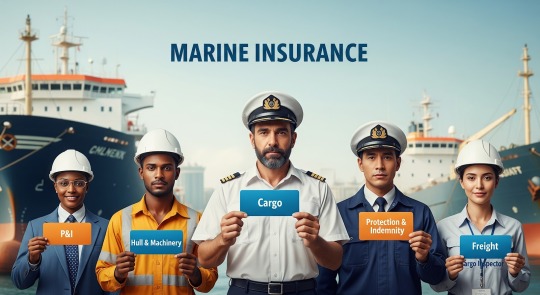
Instead of just listing policies, this guide takes a different approach. We will look at the key stakeholders involved in a typical shipment and match them to the specific types of marine insurance that protect their unique interests. By understanding your role, you can clearly see which policies are essential for your financial security.
1. For the Cargo Owner: The Exporter, Importer, or Manufacturer
Your Role: You are the owner of the goods. Your primary concern is the value of the product you have produced, bought, or sold. Whether you're shipping apparel from India to the USA or importing electronics from China, your capital is tied up in that cargo.
Your Greatest Risk: Your products being lost, damaged, or stolen during their long and perilous journey.
Your Essential Policy: Marine Cargo Insurance
This is the most crucial type of marine insurance for any business that deals in physical goods. Marine Cargo Insurance is designed specifically to protect the value of your merchandise. If your container falls overboard, is damaged by water, or is stolen from a port, this policy reimburses you for the financial loss. It protects your cash flow, your customer relationships, and your bottom line. It is the fundamental shield for anyone whose business is the goods themselves.
2. For the Shipowner: The Owner and Operator of the Vessel
Your Role: You own the multi-million dollar vessel that serves as the primary mode of transport. You are responsible for the safe operation of the ship and the well-being of its crew. Your financial exposure is immense.
Your Greatest Risks:
Physical damage to your incredibly valuable asset (the ship).
Immense legal liability if your vessel causes an accident, pollutes the environment, or is responsible for injury or death.
Your Essential Policies: A Two-Part Shield
A shipowner requires a combination of two distinct types of marine insurance to be fully protected:
Hull & Machinery (H&M) Insurance: This policy is like a comprehensive auto policy for the ship. It covers the costs of repairing physical damage to the vessel's hull, engines, and equipment resulting from events like a collision, grounding, fire, or severe weather.
Protection & Indemnity (P&I) Insurance: This is the critical liability shield. It covers the shipowner's legal responsibility to third parties. If the ship damages a dock, collides with another vessel, causes a pollution incident, or faces claims for crew injuries, the P&I policy responds. The potential cost of these liabilities can often exceed the value of the ship itself, making this coverage absolutely vital.
3. For the Carrier: The Shipping Line or Charterer
Your Role: Your business model is based on carrying cargo for others and earning "freight" revenue for that service. You may own your own vessels or charter them from shipowners.
Your Greatest Risk: Losing your earned revenue. The payment of freight is often contingent on the successful delivery of the cargo. If the goods are lost mid-voyage due to an insured peril, you may not be able to collect your freight charges from the cargo owner.
Your Essential Policy: Freight Insurance
This specialized type of marine insurance protects your cash flow. Freight Insurance reimburses the carrier for its lost freight revenue if the cargo cannot be delivered due to a covered event. It ensures that an accident that destroys the cargo doesn't also destroy the shipping line's income for that voyage, protecting the viability of their business model.
How These Types of Marine Insurance Work Together: An Example
Imagine a ship, owned by 'Neptune Shipping', is carrying a cargo of coffee for 'Andes Coffee Co.' It suffers an engine fire.
The fire damages the engine room. Neptune Shipping's Hull & Machinery policy will pay for the ship's repairs.
The fire also destroys the container of coffee beans. Andes Coffee Co.'s Marine Cargo Insurance policy will pay for the lost coffee.
Because the coffee was not delivered, Andes Coffee Co. does not pay the freight charges. Neptune Shipping's Freight Insurance policy will reimburse them for this lost revenue.
This shows how the different types of marine insurance are designed to respond to different losses for different stakeholders, ensuring everyone is made whole.
Conclusion: Finding the Right Coverage for You
The various types of marine insurance are not confusing categories but tailored solutions. By identifying your specific role in the shipping journey—whether as the owner of the goods, the vessel, or the freight revenue—you can pinpoint the exact policies designed to protect you. This stakeholder-centric view clarifies the landscape, making it easier to build a comprehensive risk management strategy. To ensure you have the right protection for your role, consult an expert who can assess your specific needs. Get clarity on all the types of marine insurance by seeking a professional consultation at marine insurance.
Frequently Asked Questions (FAQ)
Q1: I run a small business that imports products. How many types of marine insurance do I need?
A: For your direct needs, you primarily only need one: Marine Cargo Insurance. This policy is designed to protect the value of your goods. The insurance for the ship itself (Hull & P&I) is the responsibility of the shipowner.
Q2: Why does a shipowner need two main types of insurance (Hull and P&I)?
A: They cover two fundamentally different risks. Hull & Machinery insurance protects the shipowner's own physical asset (the ship). P&I insurance protects the shipowner from lawsuits and claims from third parties for damage or injury the ship may have caused.
Q3: If the ship sinks, does my cargo insurance cover the ship's value?
A: No. Your Marine Cargo Insurance policy is there to cover the value of your goods only. The shipowner is responsible for insuring the vessel with their own Hull & Machinery policy.
0 notes
